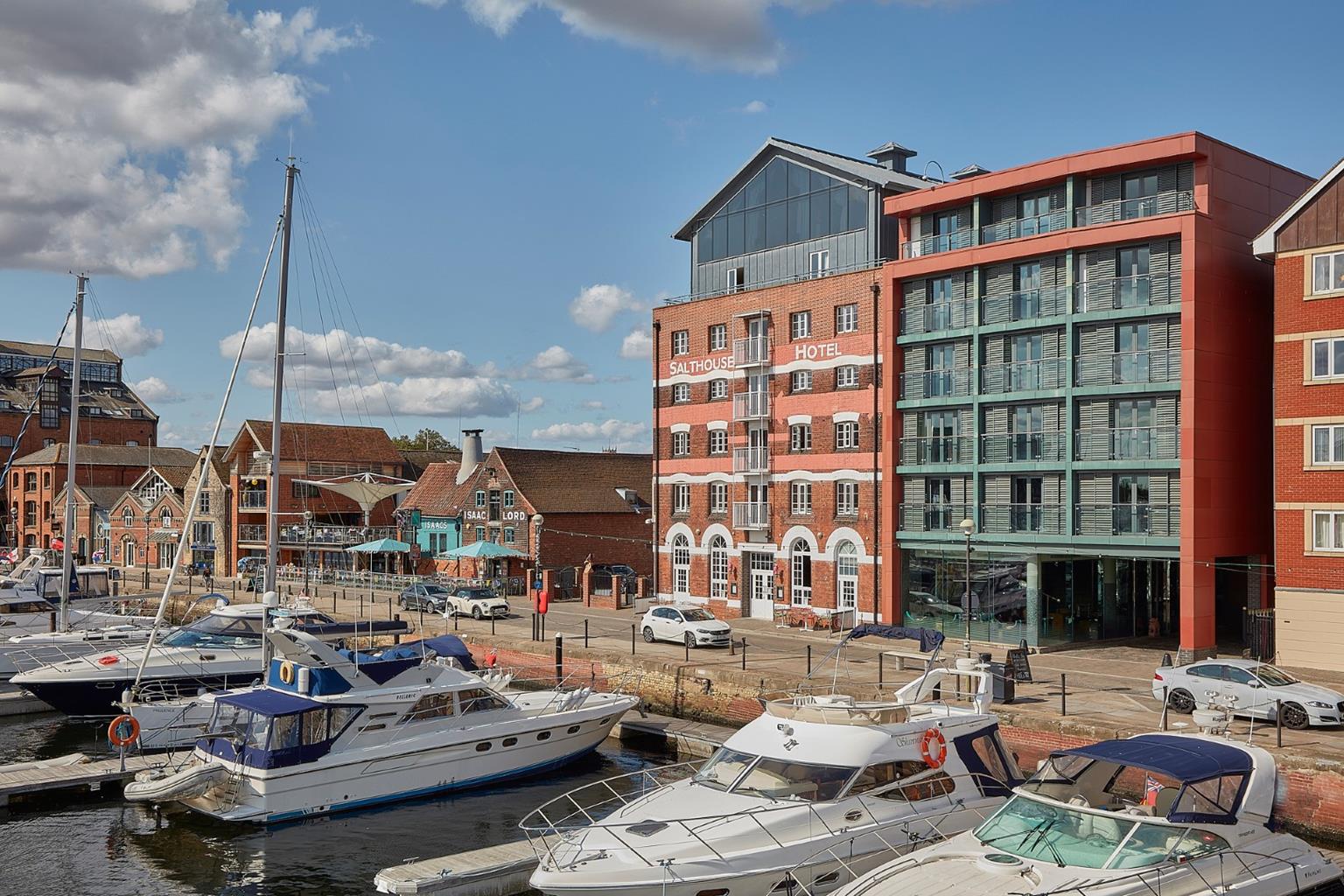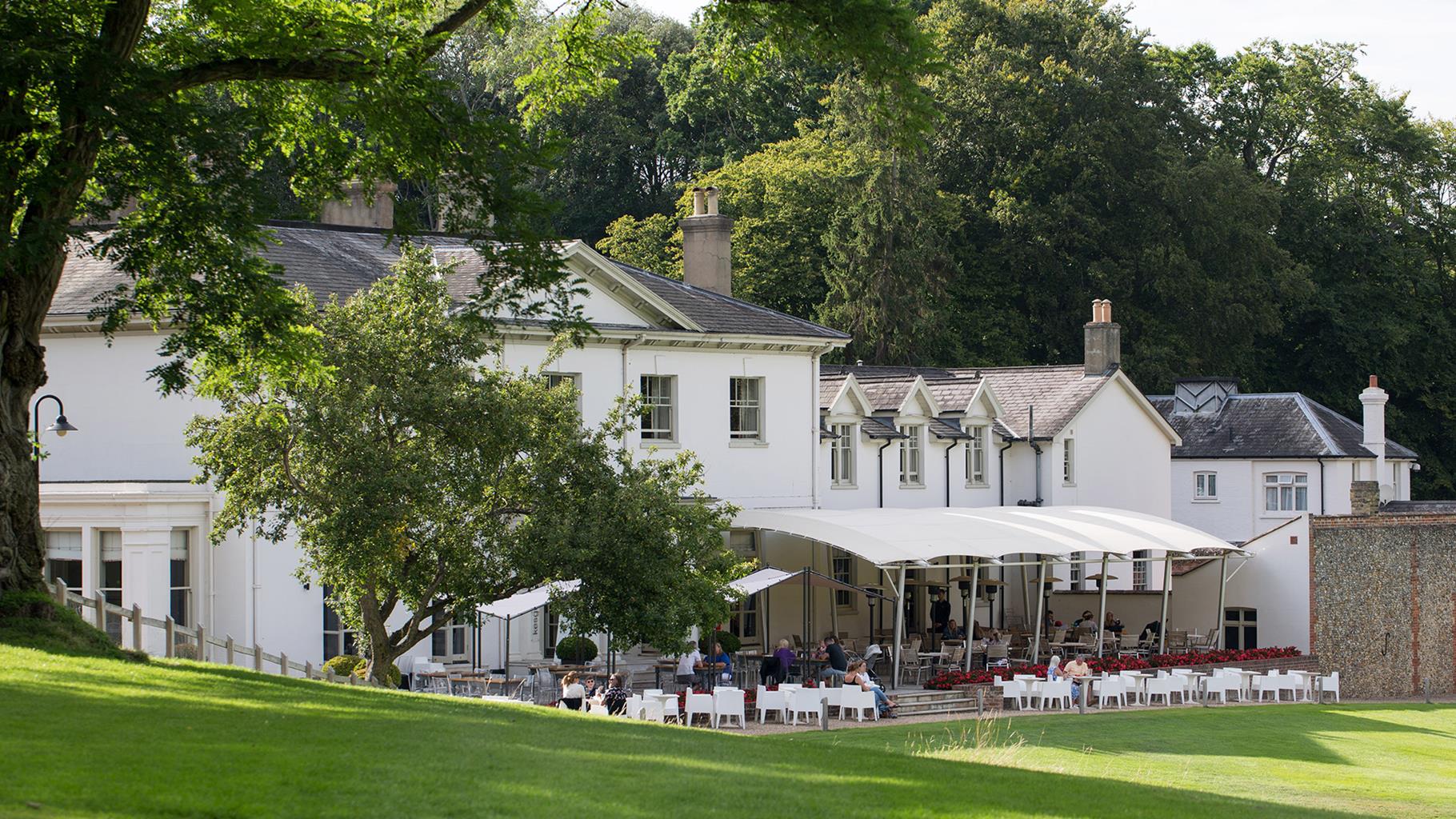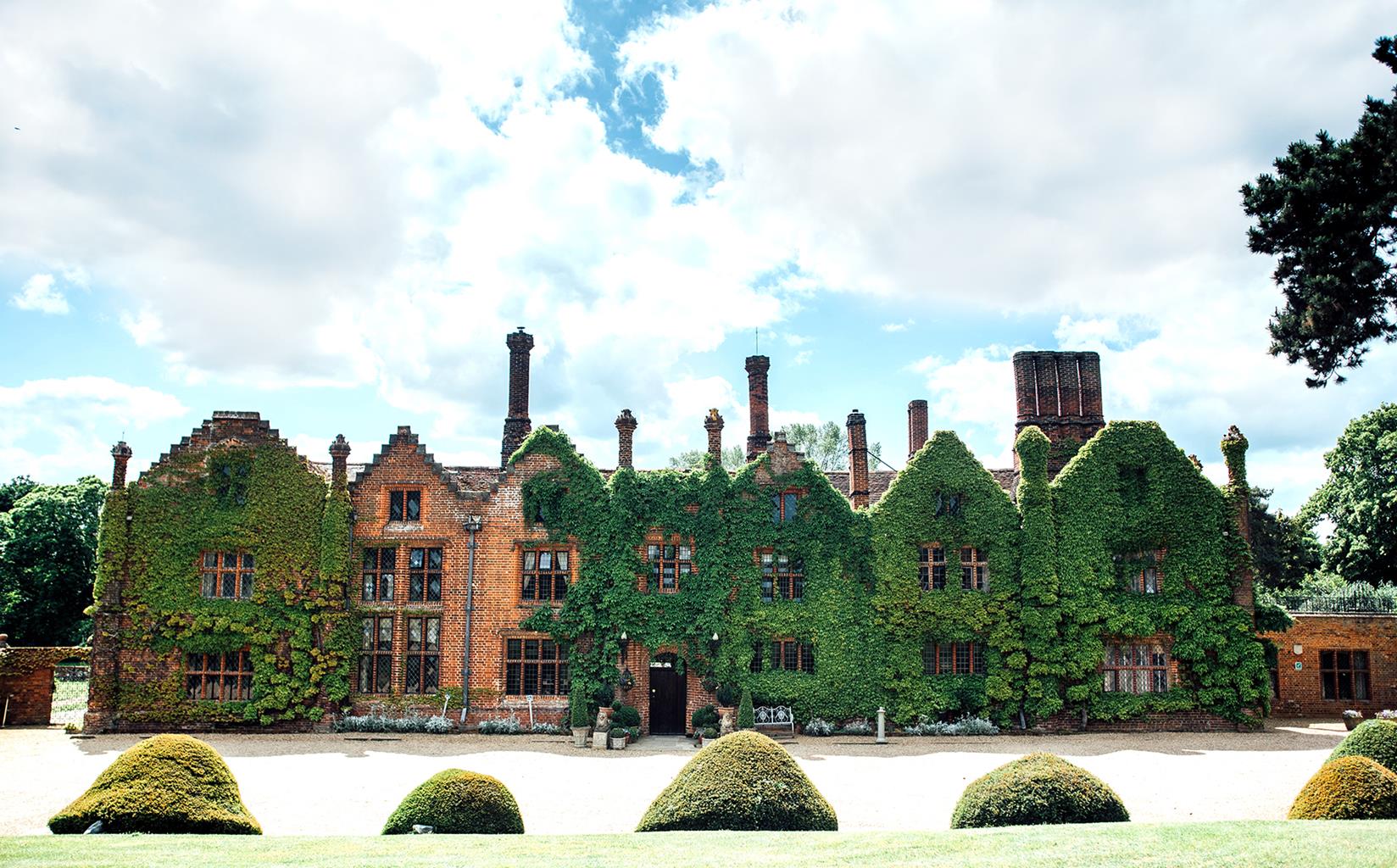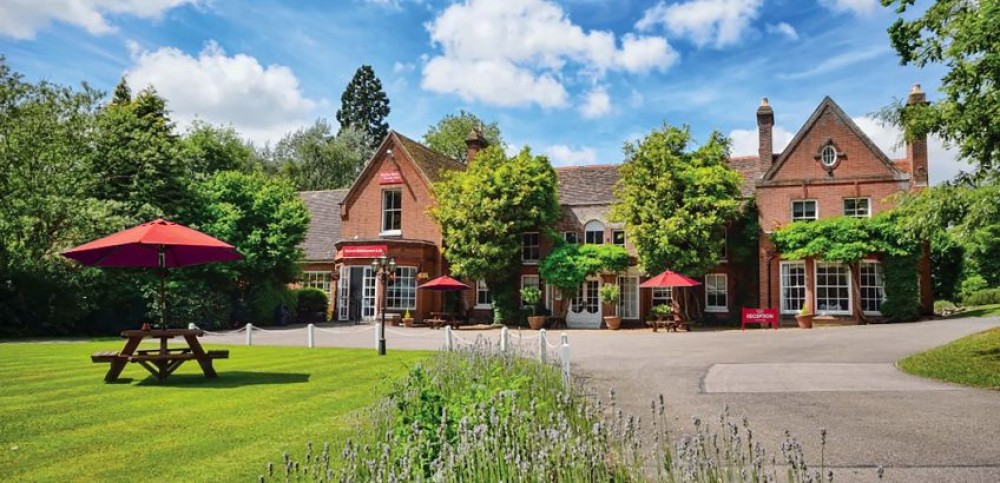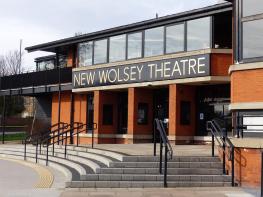Situated just a short walk from the town centre, Salthouse Harbour Hotel is a clever warehouse…
Maritime Ipswich

Explore the best of Ipswich old and new on this easy stroll down to the docks.
2 miles (3.2kms)
About the walk
The county town of Ipswich makes for a pleasant day out and there is easy walking along the pedestrianised streets of the historic centre. Founded as the Anglo Saxon trading port of Gipeswic around ad 600, it retains much of its original street plan. A dozen medieval churches survive in the town centre, surrounded by modern offices and shops. There are half-timbered houses and inns and the remains of a medieval priory, but also one of the most spectacular modern buildings in Suffolk. This short walk begins in the town centre and works its way down to the docks, built in the 19th century on the site of the original Saxon shore.
Cornhill
This large open space is the focal point of Ipswich and the historic setting for markets, fairs and executions. In 1555, the so-called Ipswich Martyrs were burned at the stake here for their Protestant beliefs. The square is dominated by the Town Hall, erected in 1868 and crowned by female figures representing Commerce, Justice, Learning and Agriculture. The old post office, now a bank, is also Victorian and has more female figures depicting Industry, Electricity, Steam and Commerce.
The Docks
In common with dockland areas in other English cities, the Wet Dock is in the process of gentrification and now houses a mixture of wharves, warehouses, apartments, yachts and waterside pubs.
Sons of Ipswich
Commemorations of three famous sons of Ipswich are to be found within yards on St Peter's Street and its continuation on St Nicholas Street. On the corner of the latter and Silent Street, there is a fine timber-framed house with a plaque to Thomas Wolsey (1475-1530), the child of an Ipswich butcher who became Lord Chancellor of England under Henry VIII but was eventually accused of high treason and ordered to travel down from York to London to be tried. A broken man, he died en route in Leicester. The late cardinal is also commemorated by a fine statue nearby, an interesting feature of which is the presence of a pet cat behind the throne on which Wolsey is seated. This may be Marlinspike, the cat who plays an unexpectedly prominent role in Hilary Mantel's Man Booker Prize-winning novel Wolf Hall. Two doors along from Wolsey's house, another plaque marks the birthplace of VS Pritchett (1900-97), author of five novels, the classic travel books Marching Spain and Clare Drummer and collections of short stories.
Across the road, a modern artwork on a plinth calls our attention to Prince Alexander Obolensky who, in 1936, scored what has become known as 'the greatest England try ever' when making his England rugby-playing debut against New Zealand in 1936. It also marked the first time England had ever beaten the All Blacks. A Russian émigré who became a naturalised Briton, the prince was tragically killed in 1940 at the age of 24 when his Hawker Hurricane crashed during a training exercise at Martlesham Heath.
Walk directions
Start at Cornhill with the grand former post office (now a branch of Lloyds TSB) behind you. Turn right to walk along Tavern Street, once filled with pubs but now a pedestrian shopping street. On your right you pass The Walk, a mock-Tudor shopping arcade built in 1933. Turn right along Dial Lane, passing St Lawrence's Church. At the crossroads with Buttermarket, note the Ancient House opposite, with its carved woodwork and decorative pargeting. Keep ahead into Arras Square, passing between St Stephen's Church, now the tourist information centre, and the Buttermarket shopping centre.
At the end, turn left along Dogs Head Street and right at the crossroads along Lower Brook Street. Turn left along Rosemary Lane between the red-brick Peninsular House, offices of the Norfolk and Suffolk Probation Trust, and Haven House, home to Customs and Excise. Continue around a multi-storey car park to emerge opposite some almshouses.
Turn left here and then right along an alleyway beside the ruins of 13th-century Blackfriars Priory, set in the gardens of a block of flats. Cross Lower Orwell Street by a timber-framed cottage and turn right along Fore Street. Cross Star Lane via the pedestrian crossing and walk past the Fore Street Baths. At the next junction, fork left past the half-timbered Lord Nelson pub and continue along Fore Street. Cross the road and turn right beside the new University building to reach the Wet Dock, the largest in England when it opened in 1842.
Turn right to walk along Neptune Quay, passing old maltings and dockside inns. After walking beneath the modern glass extension to Waterfront House, a 19th-century warehouse, you come to the Old Custom House where you can climb to the terrace for the best view of the docks. Continue along the quayside to the end of the dock, then turn right at a café called Danceeats! (sic) along Foundry Lane and left along College Street past the gateway of a 16th-century college founded by Cardinal Thomas Wolsey.
Turn right beside St Peter's Church and continue up St Peter's Street, which soon becomes St Nicholas' Street. Do take time at the corner of Silent Street to enjoy the statue of Thomas Wolsey and a cat. The timber-framed house with the Wolsey plaque is also on the corner of Silent Street, just across the road. On the left 30yds (27m) further on is the statue to Prince Alexander Obolensky.
Turn left down a pair of steps along a narrow passage leading to the Unitarian meeting house (1699), one of the first Nonconformist chapels in England. Walk round to the right of the church to reach the Willis-Corroon building, a remarkable black glass structure designed by Sir Norman (now Lord) Foster in 1975. Cross the road and turn left, bearing right along Princes Street to return to Cornhill, the start of the walk.
Additional information
Town streets, lanes and dockside promenade
Ipswich town and its port
Not very suitable
Ipswich street map from tourist information centre
Town centre car parks, or Park-and-Ride car parks off A14
Buttermarket shopping centre
WALKING IN SAFETY
Read our tips to look after yourself and the environment when following this walk.
Find out more
Also in the area
About the area
Discover Suffolk
Suffolk is Constable country, where the county’s crumbling, time-ravaged coastline spreads itself under wide skies to convey a wonderful sense of remoteness and solitude. Highly evocative and atmospheric, this is where rivers wind lazily to the sea and notorious 18th-century smugglers hid from the excise men. John Constable immortalised these expansive flatlands in his paintings in the 18th century, and his artwork raises the region’s profile to this day.
Walking is one of Suffolk’s most popular recreational activities. It may be flat but the county has much to discover on foot – not least the isolated Heritage Coast, which can be accessed via the Suffolk Coast Path. Southwold, with its distinctive, white-walled lighthouse standing sentinel above the town and its colourful beach huts and attractive pier features on many a promotional brochure. Much of Suffolk’s coastal heathland is protected as a designated Area of Outstanding Natural Beauty and shelters several rare creatures including the adder, the heath butterfly and the nightjar. In addition to walking, there is a good choice of cycling routes but for something less demanding, visit some of Suffolk’s charming old towns, with streets of handsome, period buildings and picturesque, timber-framed houses.
Nearby stays
Restaurants and Pubs
Nearby experiences
Recommended things to do
Why choose Rated Trips?
Your trusted guide to rated places across the UK
The best coverage
Discover more than 15,000 professionally rated places to stay, eat and visit from across the UK and Ireland.
Quality assured
Choose a place to stay safe in the knowledge that it has been expertly assessed by trained assessors.
Plan your next trip
Search by location or the type of place you're visiting to find your next ideal holiday experience.
Travel inspiration
Read our articles, city guides and recommended things to do for inspiration. We're here to help you explore the UK.

